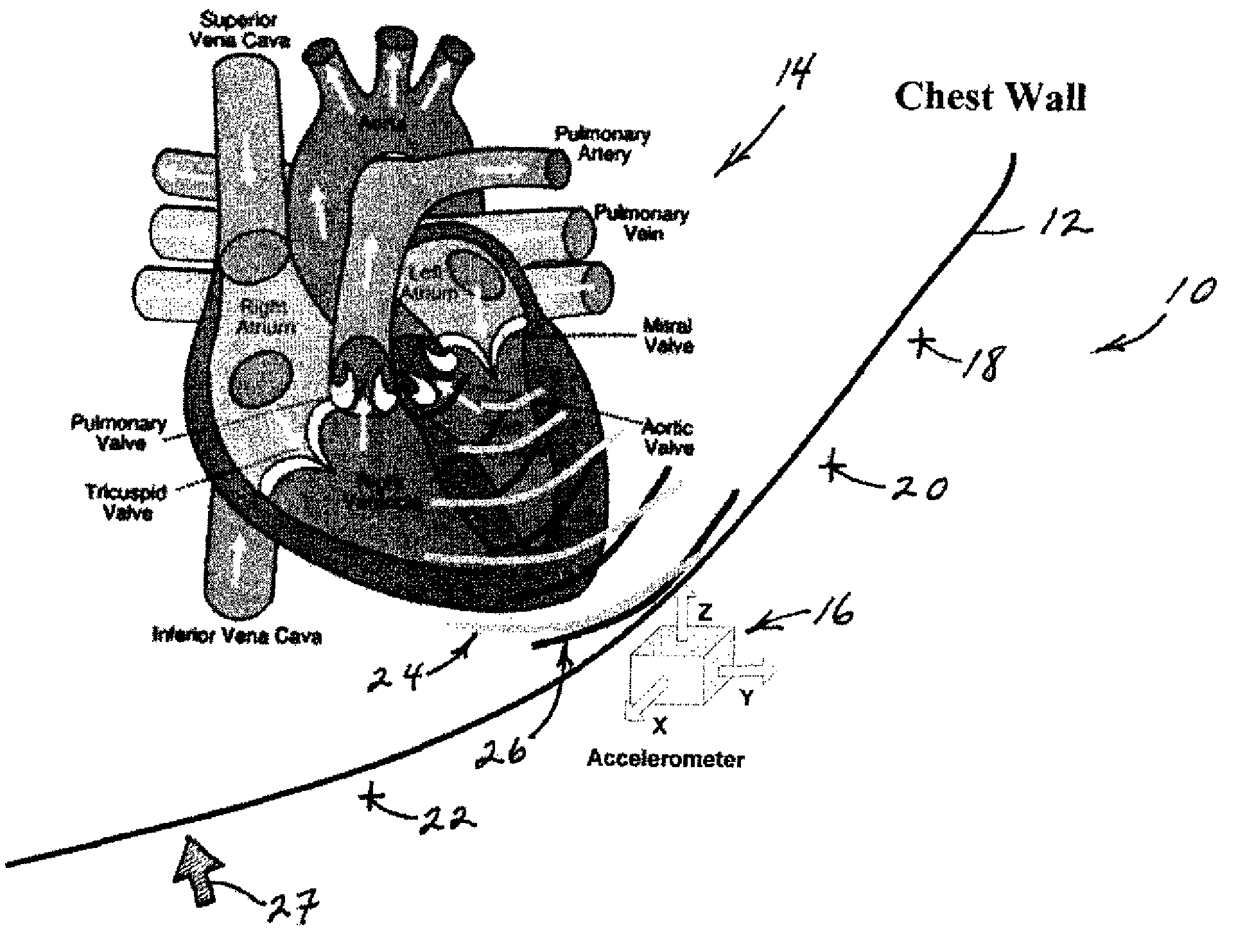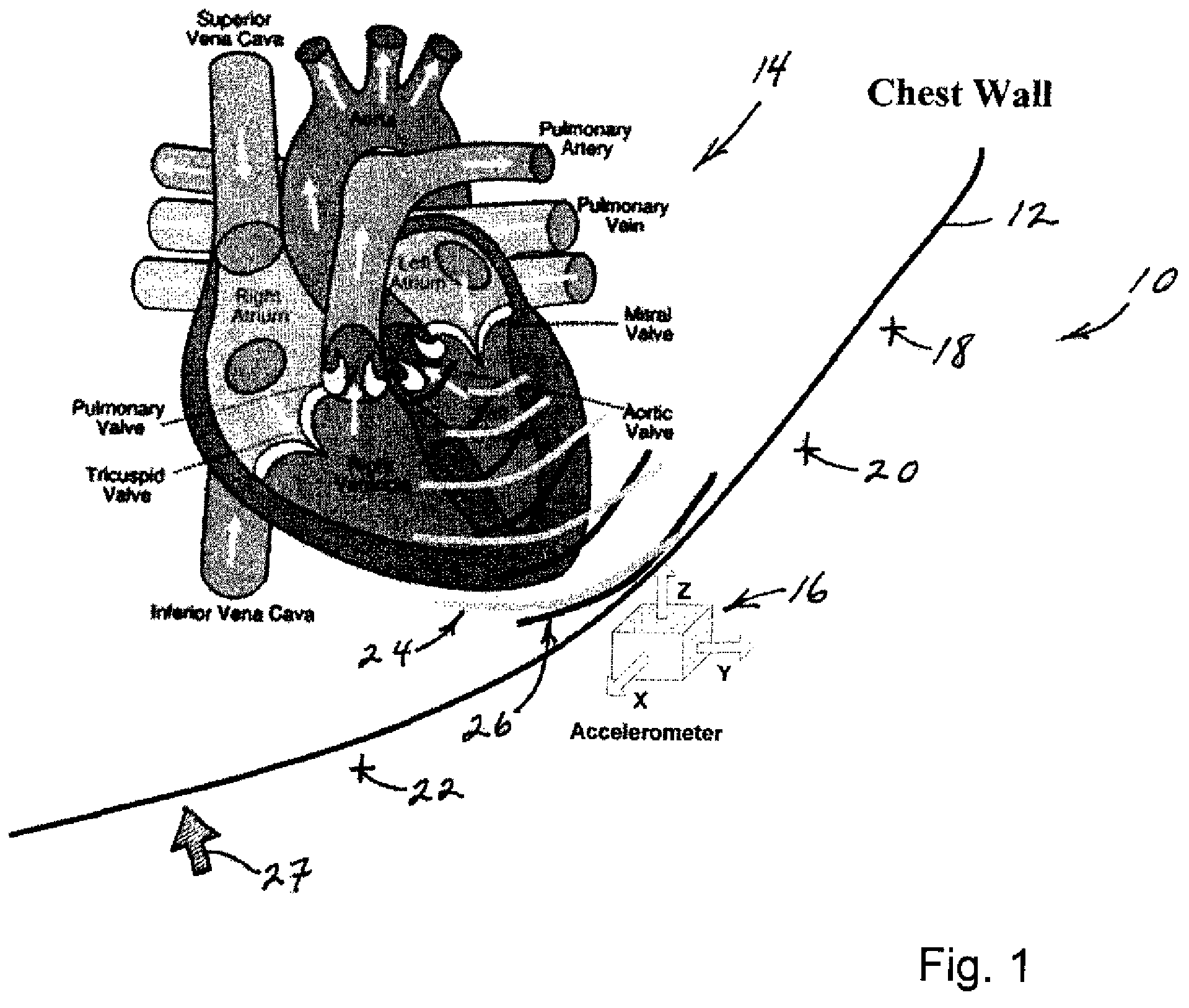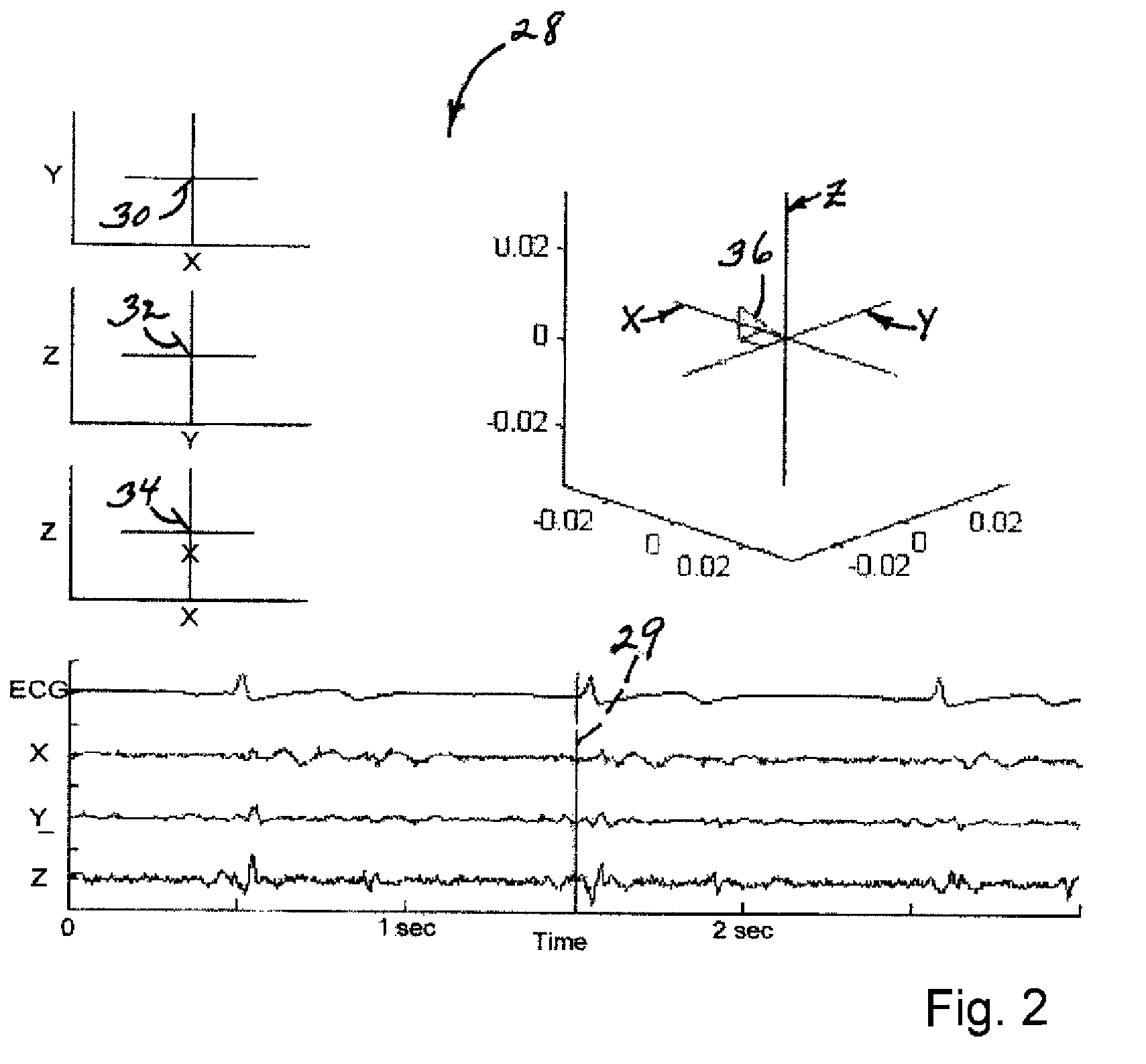Multi-axial heart sounds and murmur detection for hemodynamic-condition assessment
a multi-axial, heart sound technology, applied in the field of multi-axial heart sound and murmur detection for hemodynamic condition assessment, can solve the problems of limited information, limited stethoscopic, limited information, etc., and achieve the effect of improving the detection and classification of heart sounds
- Summary
- Abstract
- Description
- Claims
- Application Information
AI Technical Summary
Benefits of technology
Problems solved by technology
Method used
Image
Examples
Embodiment Construction
[0058]Turning now to the drawings, and referring first of all to FIG. 1, indicated generally at 10, in a stylized and schematic form, and without any particular attention paid to the scales in which things in this figure are shown, is a fragmentary portion of a subject's anatomy, including a portion 12 of the chest wall, inside of which is shown a cut-away, or cut-open, illustration of the heart 14, and outside of which is pictured a conventional, small, three-orthogonal-axis accelerometer 16. Accelerometer 16, as mentioned earlier, may either be a stand-alone device with suitable connection structure (not shown) accessible for connection to external signal-processing structure, such as that which may be incorporated into and with a conventional digital computer (also not shown), or it may be more in the nature of a self-contained device which includes embedded signal-processing and associated algorithmic circuitry, software, etc., again equipped with appropriate, outwardly accessib...
PUM
 Login to View More
Login to View More Abstract
Description
Claims
Application Information
 Login to View More
Login to View More - R&D
- Intellectual Property
- Life Sciences
- Materials
- Tech Scout
- Unparalleled Data Quality
- Higher Quality Content
- 60% Fewer Hallucinations
Browse by: Latest US Patents, China's latest patents, Technical Efficacy Thesaurus, Application Domain, Technology Topic, Popular Technical Reports.
© 2025 PatSnap. All rights reserved.Legal|Privacy policy|Modern Slavery Act Transparency Statement|Sitemap|About US| Contact US: help@patsnap.com



